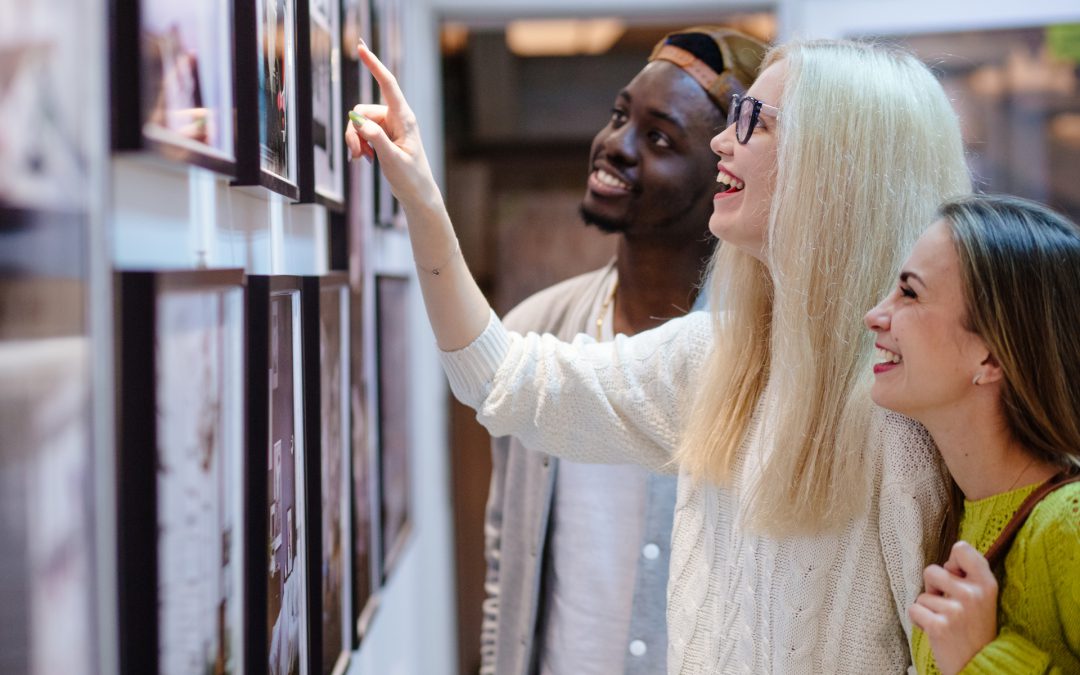When you are booked on or exhibiting at a show there are few key points and factors to remember. It is important to create a good image of yourself so that buyers will remember you and consider buying your work. In this article we discuss the basics of how to present yourself, interact and build your contacts when at shows.
- It starts with you-looking good! – First impressions count. This is not just based on what you’re wearing (but looking the part is important too!) make sure you are smiling, standing rather than sitting down, look friendly and approachable. Create a stand with a good positive vibe. Do not be pushy.
- Does your stand hit the mark? – What do you want to get across? Is the work consistent? Is it themed? Too many styles together don’t work. Do not clutter the space – the work needs to have space to breathe. Is the art on display suitable for lower and higher budgets? It’s worth thinking about bringing prints along if that is allowed. Have a variety of sizes and don’t forget the eye-catching pieces, you will need something that will draw people to your stand, and make it stand out from the crowd.
- Your clients are important – Always ask them questions such as what caught their eye? Make sure you listen to their answers and a natural conversation will flow. Share the love of your work.
Help them develop a train of thought, does the artwork evoke memories? Develop a clear understanding of their interest. People like to be listened to and heard. Help potential buyers to invest emotionally in your work. If it relates closely to them, the more likely they will respond and will purchase pieces. They may also bring a fresh perspective on your work such as useful insight and angles. This will be useful for your ongoing work and likely play a role in the works you provide in the future. This way you can gain a deeper understanding of your work and the effect it has on others.
- Now tell them about your work – What is the story behind the piece? How was it created? Be ready with this information, prepare ahead with stories for each individual piece.
- The buyer loves your work but where will it go? – Is it for their living room, office, kitchen? It is important for the client to imagine a place where it will go. Help them with this. However, be mindful of limitations – size of space, will it fit? Even if the potential buyer doesn’t buy on this occasion, they’ll remember your efforts. Marketing for potential sales is just as important as getting the sale there and then. Add them to your database for future newsletters and information on new pieces.
- Build your fan base – Give equal attention to those that purchase your work without effort, to those you are trying to persuade. Get their contact details, maybe take a photo (with permission and where appropriate (and share on Facebook), follow up and keep the connection strong.
